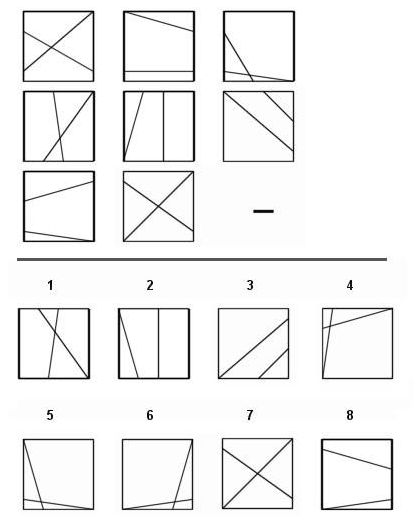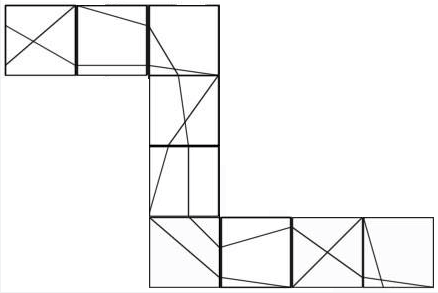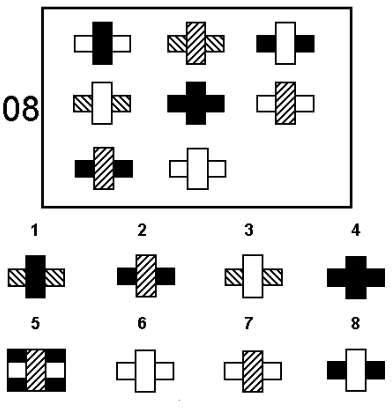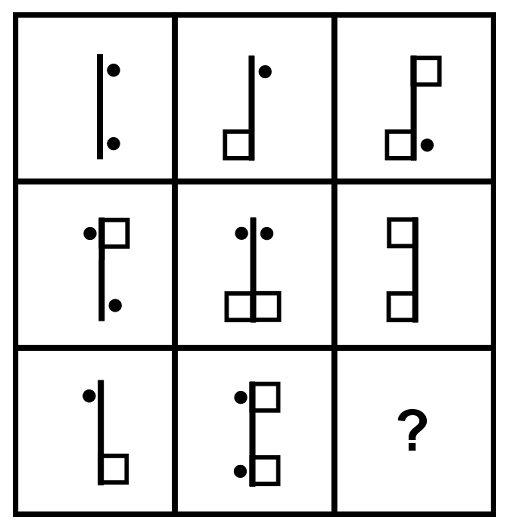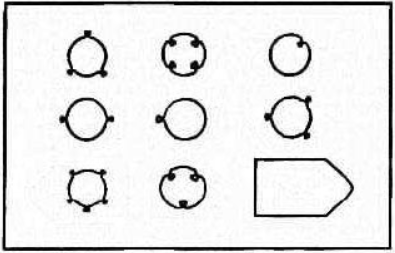
Scroll down for a clue and further down for the answer.
*
*
*
*
*
*
*
Clue: You need to overlap the above two images to produce the bottom row of images. If outer lines overlap a set of rules is produced. If inner lines overlap, another set of rules is created.
Scroll down for the answer.
*
*
*
*
*
*
*
Answer: Option 2
The Raven’s matrices consists of:
A. The inner, thinner lines that protrude from the centre circle.
B. The outer, thicker lines that don’t touch the inner circle
Essentially you need to superimpose the above two images to create the bottom row image and follow the rules:
The bottom row is produced by the following rule: If ‘A’ overlaps above it, the line remains. If ‘A’ only occurs once above it, the line vanishes.
The bottom row is also produced by a rule: If ‘B’ overlaps above it, the line vanishes. If ‘B’ only occurs once above it, the line remains.
There is also a pattern used to produce the last column of images. It is the reverse of the rows production rules.
We can determine the missing image by following the row rules or the column rules.
For this answer we will use the explained row rules.
There are two images directly above the missing image. When these two images are superimposed certain inner lines overlap. The line at 12 o’clock and the line at 6 o’clock. Following the row rules, inner lines that overlap remain so our answer contains an inner line at 12 o’clock and an inner line at 6 o’clock.
Now we can focus on the outer lines in the superimposed image. The top right diagonal and bottom right diagonal lines only occur once and following the row rules for outer lines, these lines remain.
This produces option 2 as the answer.
